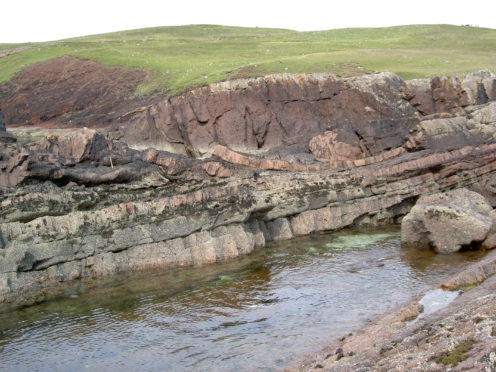Scientists believe they have discovered the site of the biggest meteorite ever to hit the British Isles – and it is under the stormy waters of the Minch.
Evidence of the 1.2 billion year-old strike – which they say would have been “catastrophic” – was first discovered in 2008 near Ullapool by scientists from Oxford and Aberdeen Universities.
Now new evidence suggests the rock – which may have been as much as a mile across – is in fact buried deep below the waters between the mainland and the Western Isles.
And the researchers now say the next step is to carry out a full and detailed geophysical survey of the Minch.
They believe it is vital the nature and impact of the meteor is understood – as such a strike will happen again.
In a paper published in the Journal of the Geological Society this week, Dr Ken Amor from the department of earth sciences at Oxford University reveals how he has identified the crater location.
He says it is some nine to 12 miles west of a remote part of the Scottish coastline, buried beneath both water and younger rocks in the Minch Basin.
Dr Amor said: ‘The material excavated during a giant meteorite impact is rarely preserved on Earth, because it is rapidly eroded, so this is a really exciting discovery.
“It was purely by chance this one landed in an ancient rift valley where fresh sediment quickly covered the debris to preserve it.
“The next step will be a detailed geophysical survey in our target area of the Minch Basin.”
Using a combination of field observations, the team were able to gauge the direction the meteorite material took at several locations, and plotted the likely source of the crater.
Dr Amor added: “It would have been quite a spectacle when this large meteorite struck a barren landscape, spreading dust and rock debris over a wide area.”
Professor John Parnell from Aberdeen University, has worked alongside the Oxford team.
He believes it possible the exact location of the meteor may never be known as it may be too deeply buried.
“New data from Oxford University has narrowed down the location of where the asteroid crater might be, but it is still unknown, and may never be known, because it is buried too deeply to locate it,” he said.
“Something of comparable size, possibly a mile across, hitting the Earth today would be absolutely catastrophic, so its important to try and understand what happened.
“It was a very rare event but it will happen again some day.”
It is thought that collisions with an object about half-a-mile across occur between once every 100,000 years to once every one million years, but estimates vary.
